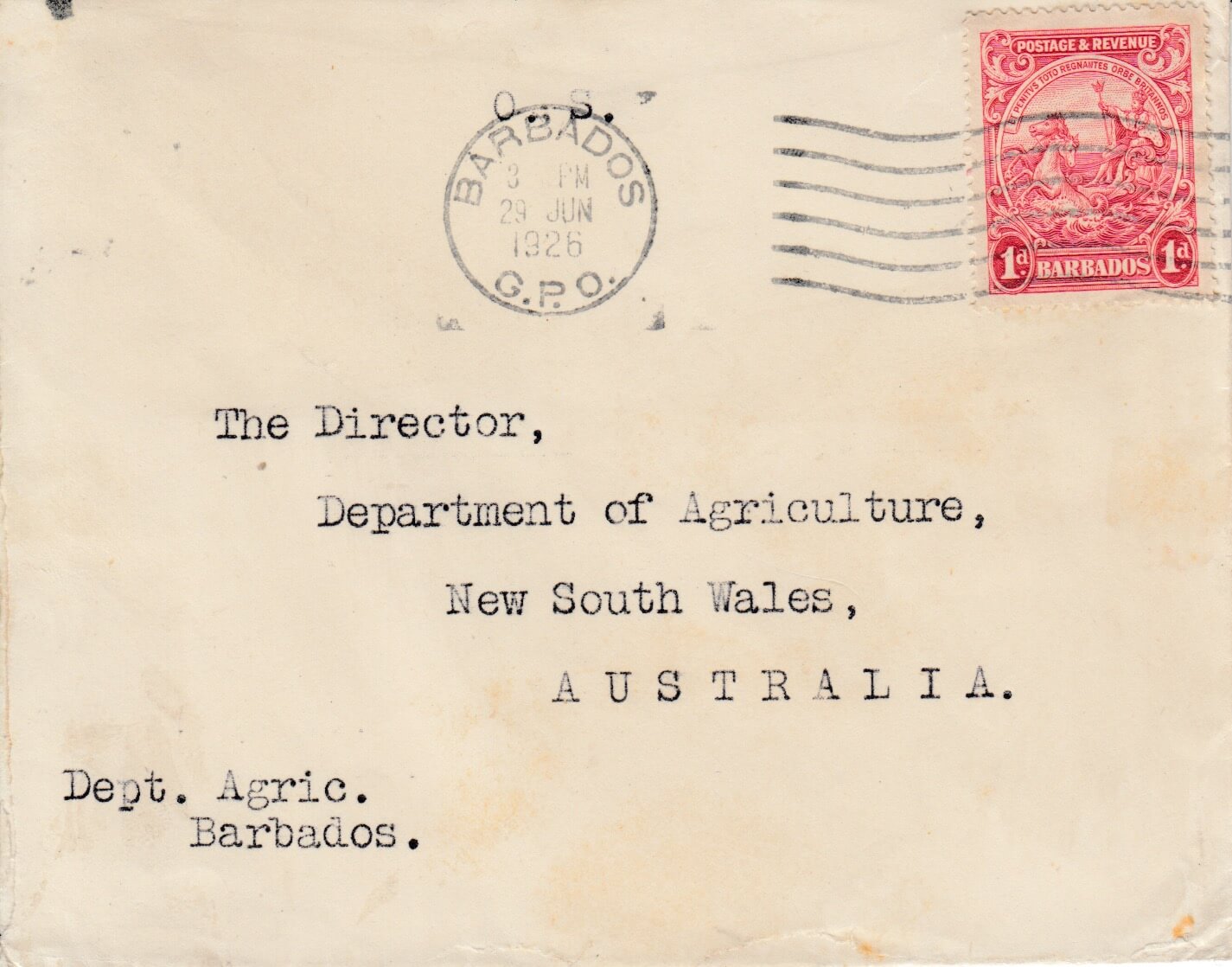
Postal systems around the world grew up based on the simple premise adopted in Britain’s penny post in 1840; make postage affordable and more people will use it. Alongside the growth in postage volumes, the years from 1840 onwards also saw a huge rise in literacy amongst the population. This in turn, in what was something of a virtuous circle, meant that more people sent more mail as the Victorian age progressed.
With the introduction of postal administrations into other parts of the Commonwealth, there was a need to ensure a simple set of rates was in place and as such, the Empire Rate was the agreed standard. This simple set of rates meant that you could send a letter, from anywhere in the British Empire to anywhere else in the British Empire, for just a penny. So, from 1854 onwards in Barbados, it was possible to send a letter to anywhere in the Empire for just a penny. This rate remained in use for almost 100 years, until in 1950 the rates were increased.
Post World War One in 1918, however, rates were temporarily increased to reflect the additional costs imposed by the war. As such, on 1st June 1920 rates from the U.K. to the colonies were increased to 2d for the first ounce and 1d for each ounce (or part thereof) after, though it took Barbados until 1921 to reflect this in its outgoing mail. Similarly, the rate to the U.S.A. also rose to 2d and 1d in 1922. On 10th March 1925 , however, the rates were reduced back to the previous levels meaning the rate to the Empire (including Australia) was once again 1d for the first ounce and 1d per ounce thereafter.
All of which brings us to this small cover, sent from the Department of Agriculture, Barbados to the Department of Agriculture in New South Wales, Australia.

The cover is paid by use of a single 1d stamp (SG231) from the 1925-35 Postage and Revenue series and has been machine cancelled on 29th June 1926 at 3 PM with a combination of six wavy line cancel and CDS (F6i), which as the machine cancelling was only introduced in April 1926 makes this cover an early use of this cancelling combination.
Hidden underneath the CDS cancel and not immediately obvious, are the letters O.S. which presumably means this letter was on Official Service. Given that it originated in the Department of Agriculture it’s a pretty safe bet that this was the case.
So, an official envelope from a government department in Barbados to another Government department in Australia, this letter travelled over 10,000 miles, mostly by ship, to reach its destination. As there are no other marks or cancels on the cover we can’t tell how long this took, but one thing we can be sure of; it’s fantastic value for money!
